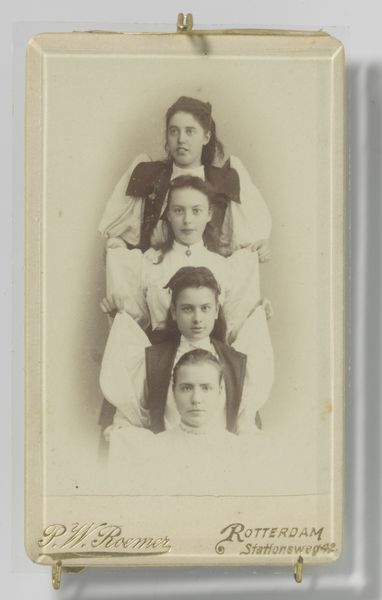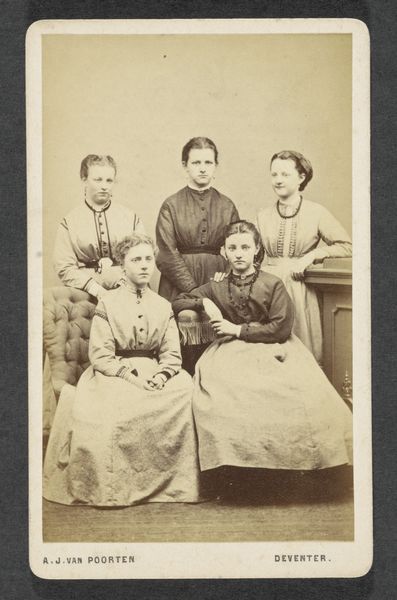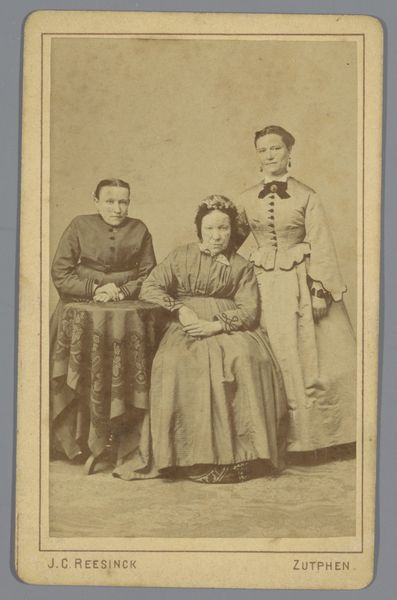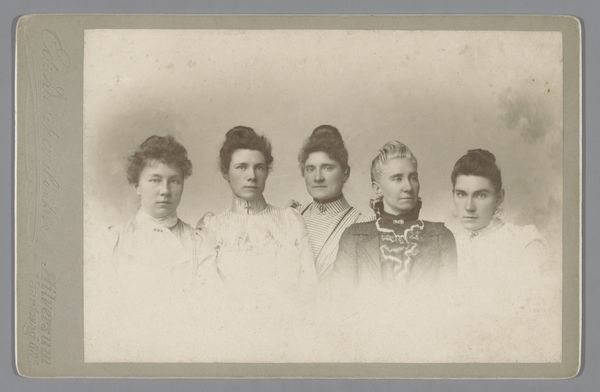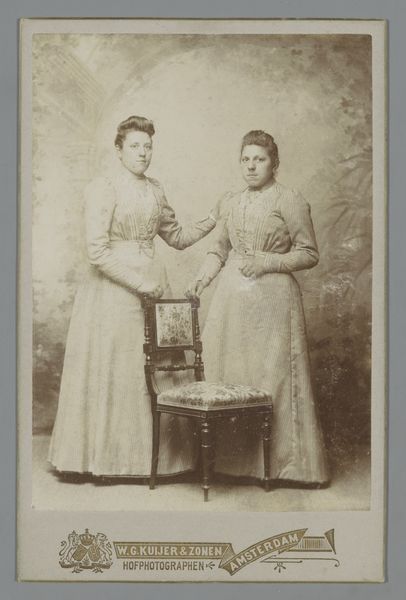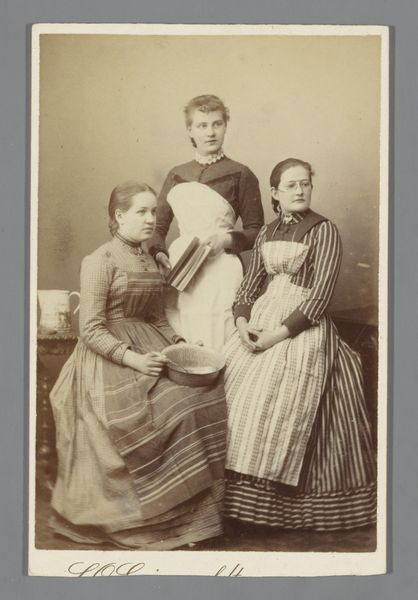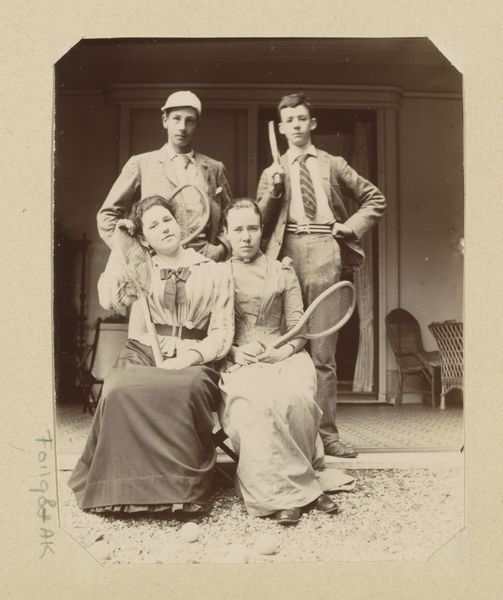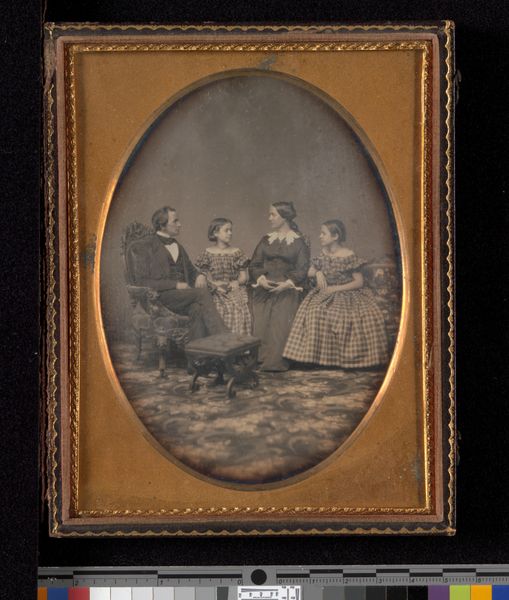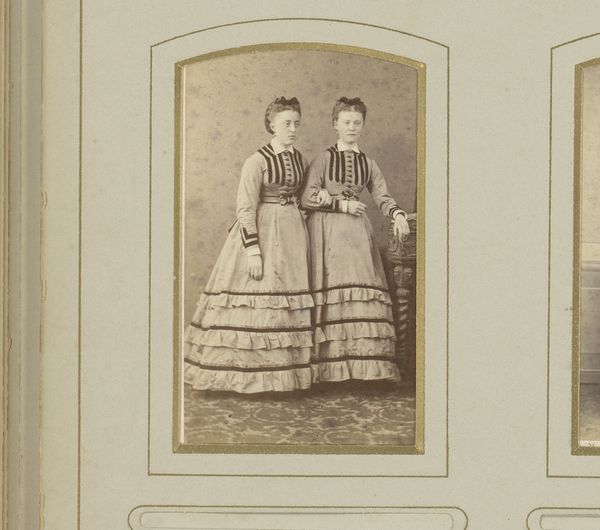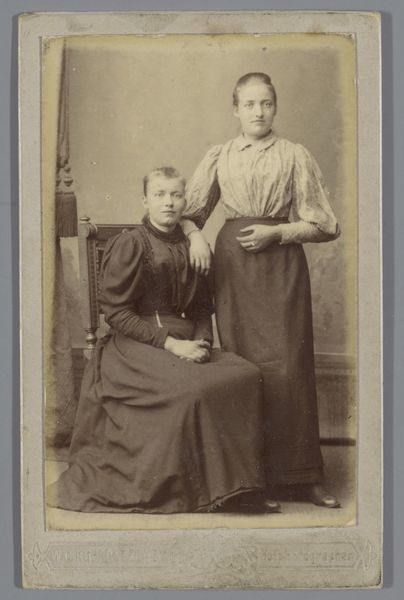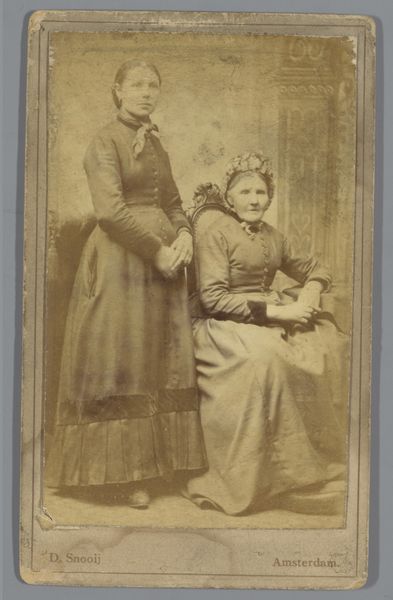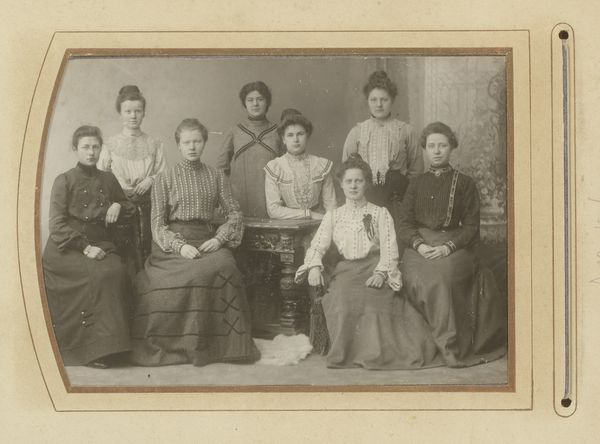
photography
#
photography
#
group-portraits
Dimensions: height 139 mm, width 101 mm
Copyright: Rijks Museum: Open Domain
Editor: Here we have a group portrait by W.G. Kuijer & Zonen, likely taken between 1885 and 1906. It features four women, and what strikes me is the almost…solemn formality of the photograph. What do you see in it? Curator: I see a carefully constructed representation of social identity in a time of rapid change. Think about the rise of photography and its accessibility during this period. For the middle classes, portraiture was no longer the exclusive domain of the wealthy elite who commissioned paintings. What do you think this accessibility did to social convention? Editor: I guess, photography offered a new way for people to record and present themselves? Curator: Precisely! This image is intriguing because of how deliberate their posing seems, yet, they are unknown. There is a performance here. The studio backdrop, the carefully chosen dresses... They communicate respectability and a certain social standing, even without names or explicit identifiers. What socio-economic messages could we infer from the clothing? Editor: The high-necked dresses and voluminous sleeves suggest a degree of affluence; they don't look like they’re engaged in manual labor. Also, is that uniformity important? Curator: It’s certainly worth considering! It suggests a desire for social cohesion, perhaps, presenting a unified front. Maybe these women are part of a club or religious order. Group identity becomes really interesting here. They're expressing it through visual cues. The women, in this context, perform within specific social structures and rules that become publicly accessible. Editor: It's amazing to think about what a "simple" photograph can tell us about a society’s values and how individuals wanted to be perceived! Curator: Absolutely, it helps to remind us that how the culture in which it was created may be completely unfamiliar to us, and should prompt more analysis, even of simple photographs.
Comments
No comments
Be the first to comment and join the conversation on the ultimate creative platform.
